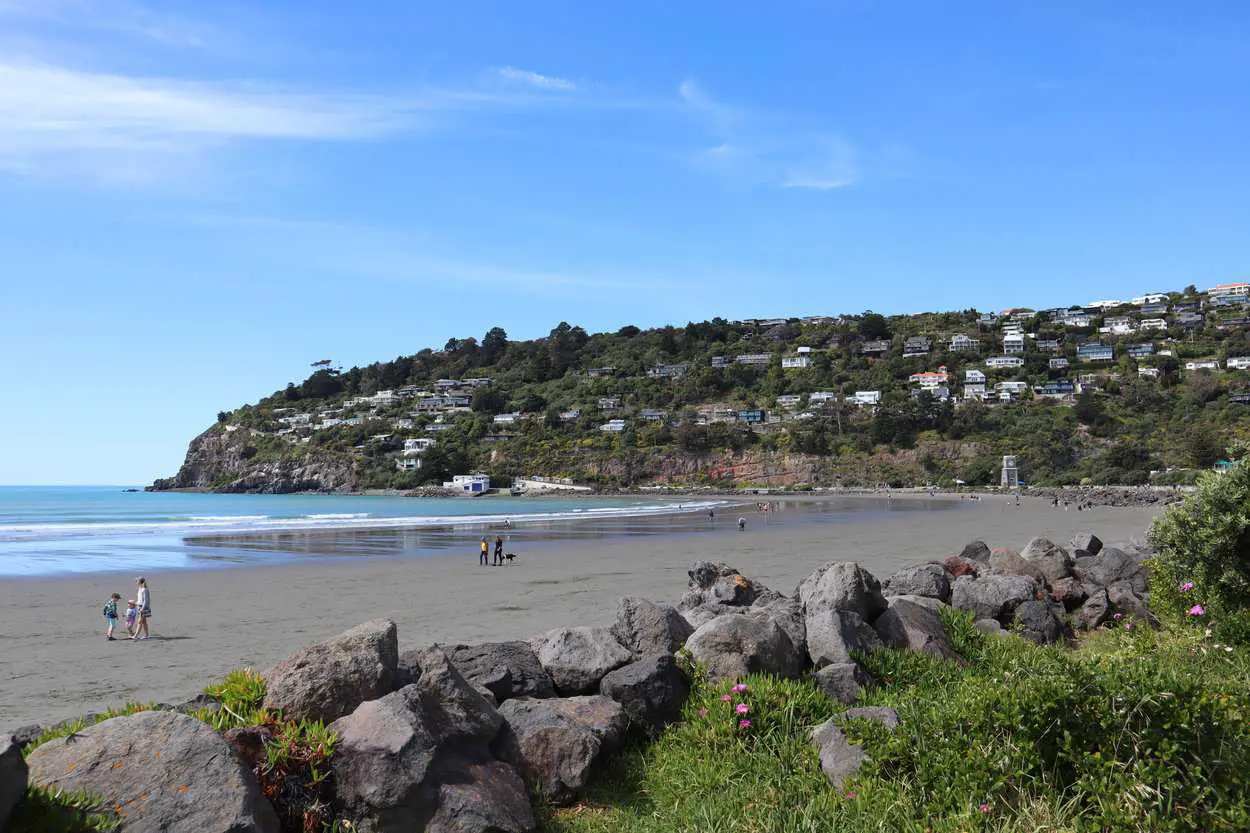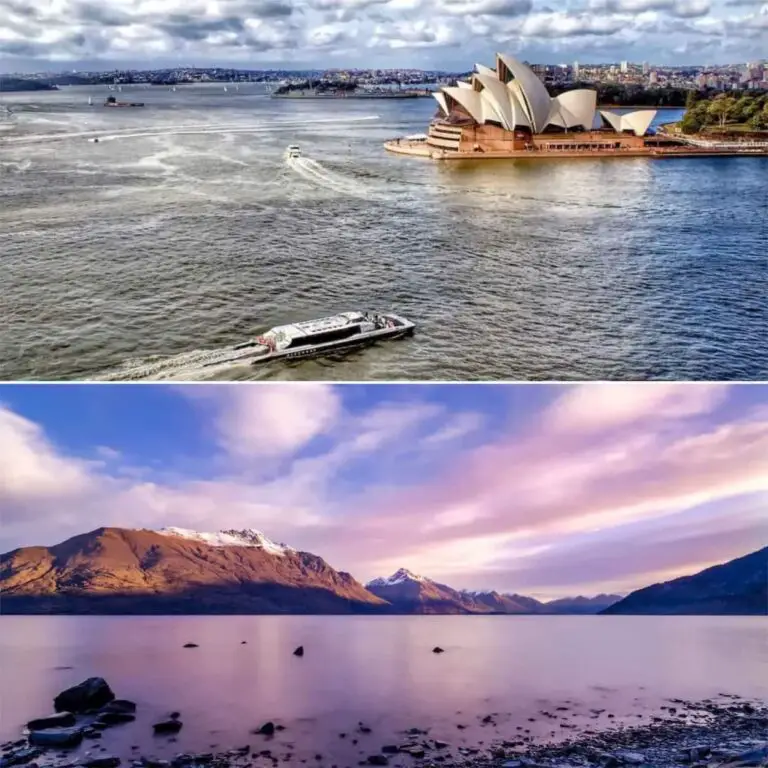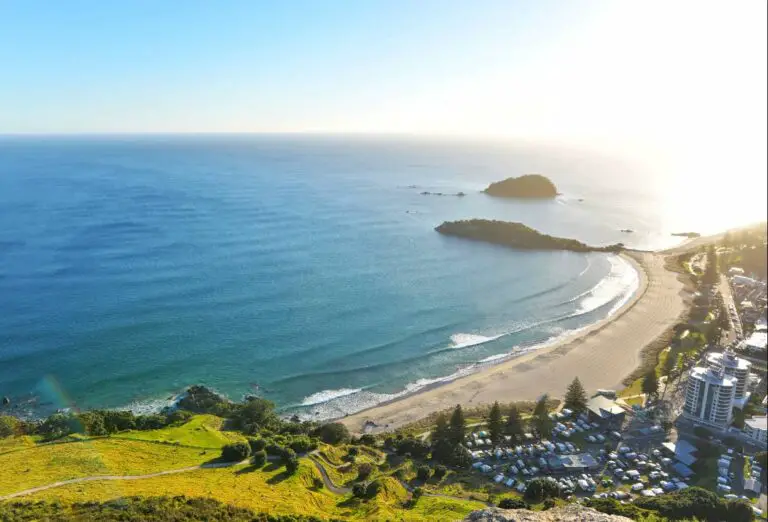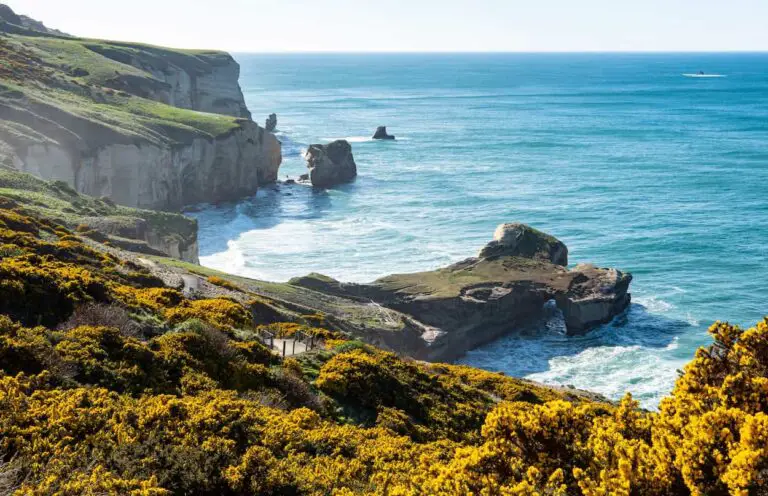How Hot Does It Get in New Zealand? Summer Weather Guide
Some people might think New Zealand has similar weather to Australia, since the countries are neighbours. After all, France and Germany usually have similar weather. But New Zealand and Australia are separated by an ocean, meaning New Zealand’s weather is usually less extreme (meaning it’s far more pleasant).
The summers in New Zealand tend to be hot and dry, with pockets of the country experiencing spells of humidity. Just think of New Zealand’s wine industry and the fact that kiwifruit requires warm weather to properly crop, and you can get an idea of what to expect during a New Zealand summer—hot, but not too hot. Hastings is the town that’s consistently the warmest, with average summer temperatures of 25.5 °C (77.9 °F).
There are places in New Zealand that enjoy dependable and delightful weather and places that never dry out because it never stops raining. There’s a lot of weather crammed into such a small country!
Also, read our guide on weather in New Zealand vs in the UK.
The climate of New Zealand
New Zealand’s climate is classified as oceanic, with cold (but not devastating) winters and summers that aren’t too brutal. The narrow layout of the country (meaning the whole place is pretty coastal), along with New Zealand’s mountain ranges, significantly influences the weather (and the occasional weirdness of that weather).
That weirdness can be obvious to anyone who visits the South Island’s West Coast Region, which is part of what’s called a rain shadow effect. Rainfall pummels the coast and is then broken up by the Southern Alps, so the landscape on the other side of the mountain range is extremely dry (even arid).
The West Coast Region receives about 2,849 mm of rainfall per year (about 112 inches), so yes, it’s wet. This is nothing compared to the Milford Sound in the southern South Island, which gets about 6,700 mm of rainfall per year (or 264 inches).
An award is given each year for New Zealand’s sunniest town (the most annual hours of sunshine). Tekapo in South Canterbury (the South Island) features a jaw-droppingly beautiful lake fringed by dramatic mountains—all illuminated by the town’s 2653.2 hours of sunshine per year.
Historically, it’s the North Island that tends to be the sunniest, with Hastings and the Bay of Plenty often having the most sunshine in previous years. Nelson in the northern South Island is also a contender for the most annual sunshine.
Weather in summer
New Zealand’s summer is officially from late December to late March, although most people just think of summer as being the hottest months—December through to February.
The summer weather in New Zealand is mostly predictable, although extreme weather events can strike. Violent summer storms are pretty common just across the Tasman in Australia but aren’t so well-known in New Zealand. Auckland and much of the North Island were devastated by heavy rainfall and widespread flooding in January 2023, which was made worse by the arrival of Cyclone Gabrielle a couple of weeks later.
There was extreme flooding over much of the North Island, with many towns on the Coromandel Peninsula (near Auckland) cut off from the rest of the country when landslides covered roads. A number of New Zealand’s limited rail tracks were also washed away.
Extreme rain to the point of flooding and landslides are fairly rare in New Zealand, and extreme conditions are usually unrelated to the weather, such as earthquakes and volcanic eruptions. Neither event happens regularly, but isn’t unheard of. Kiwi kids get training to know what to do in an earthquake, just like a fire safety drill.
Although the summer months are December through February, this isn’t necessarily the best time to visit. New Zealand’s schools break for summer for most of December and January, and these months are the peak tourism season. You’ll still enjoy fantastic weather in the shoulder seasons (e.g. October and November; March and April) with fewer people to contend with.
How hot does it get in Auckland?
If you’re visiting New Zealand, you should see as much of it as possible. It’s a small country that’s far away from the rest of the world, so make the most of your time in the land of the long white cloud. But chances are that you’ll start out in Auckland (which is the main point of entry to the country). How warm do things get in New Zealand’s largest city?
Auckland’s oceanic climate is specifically categorised as subtropical, which can be a little confusing. There’s not much that’s tropical with Auckland’s weather, aside from some humidity during the height of summer. This humidity is not as noticeable as other subtropical regions in the southern hemisphere (like Queensland, Australia).
An Auckland summer is a warm summer—but not overwhelming. In fact, depending on where in the world you come from, you might find an Auckland summer to be cold. The average temperature is pretty mild, 23.7 °C (74.7 °F). This average is for February, which is historically the hottest month.
Remember that the daily temperatures can climb well above this average, and temperatures in the high twenties or low thirties are frequent.
The hottest day on record in Auckland happened back in February 2009, with a temperature of 34.4 °C (93.9 °F). And when you think about summer temperatures, you might be wondering about winter.
Winters are mild, with frequent fog and an average temperature of 14.7 °C (58.5 °F). Snow doesn’t really fall in these parts, and although it has been recorded in Auckland, it has only happened a handful of times in the last century.
Average temperature in New Zealand during the summer
We mentioned how the weather in New Zealand is mostly predictable, but please note the word mostly. Anybody visiting New Zealand, especially if you’re getting off the beaten track, needs to keep an eye on the weather forecast. Extreme weather events aren’t so regular, but to call them extreme is an understatement, so don’t get caught off guard.
The typical summer conditions for Auckland have already been covered, but what about the rest of the country? Wellington experiences gusty wind, which can make the air temperature feel a few degrees colder than it is. The temperatures rarely rise above 26 °C (79 °F). The daily mean maximum temperature for December is only 18.7 °C (65.7 °F). In January it’s 20.2 °C (68.4 °F); in February it’s 20.4 °C (68.7 °F).
Christchurch is further south but is still warmer than Wellington. The whole region actually enjoys glorious weather, aside from the dead of winter. Christchurch’s daily mean maximum temperature is 21 °C (69.8 °F) for December, 22.7 °C (72.9 °F) in January, and 22.3 °C (72.1°F) in February. Severe variations are possible, though, and the city once recorded a temperature of just over 40 °C back in 1973.
Queenstown is inland, not prone to the oceanic temperature fluctuations of other major New Zealand cities and towns. The mean maximum temperature for December is 19.8 °C (67.6 °F). It rises to 21.7 °C (71.1 °F) in January, and 21.5 °C (70.7 °F) in February.





![17 Best And Worst Suburbs in Christchurch [2024 Guide]](https://simplenewzealand.com/wp-content/uploads/2023/09/Park-Hagley-CHCH-768x512.jpg)

